In January, Max Mara debuted its Pre-Fall 2015 collection with a show in New York’s Center548, the old Dia in Chelsea. It might have been the coldest day of the year, but what made the presentation more exceptional was that art heavyweights like Adam Weinberg were in attendance, in addition to the regular fashion crowd wearing all black everything. The reason? The collection took direct inspiration from the Whitney Museum of American Art: from artists the museum has shown, the new Renzo Piano building that opens this spring, and its location straddling the High Line in New York.
It felt very nineties, with dashes from the seventies and eighties. Oversized knit sweaters, sloping and cinched coats, and lots of layers appeared in black, grays, and browns. Fluffy furs, shiny puffers, and metallic mesh had their moments. There was a shock of four models in head-to-toe red, and animal imagery in place of prints. Little makeup, wet hair, heavy boots, the newly designed Whitney bag, and beanies topped off each looks.
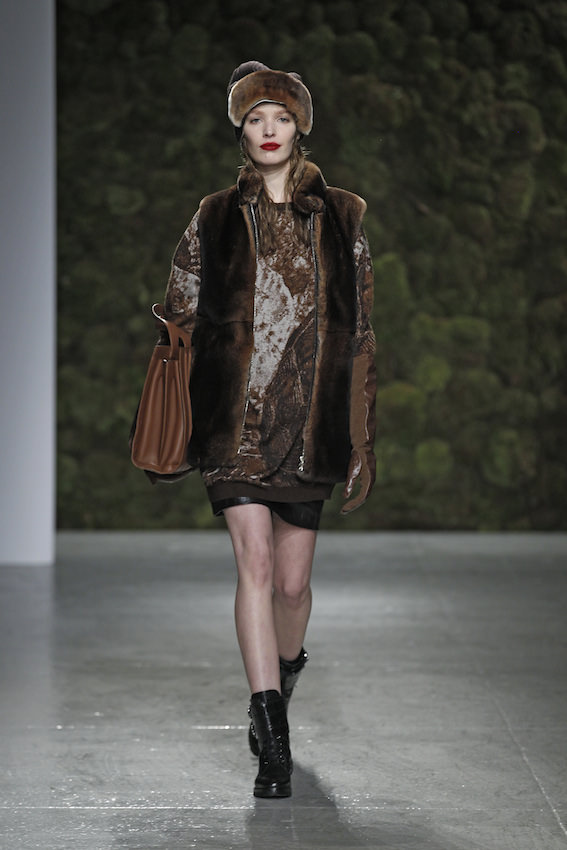
Courtesy of Max Mara
Afterward, Whitewall sat down with Max Mara’s creative director, Ian Griffiths, to hear more about his fashion take on the Whitney, whose opening in its new downtown Manhattan space this spring will be supported by the brand.
WW: Max Mara has partnered with the Whitney for a few years now, but more in a supportive role. Why with your Pre-Fall 2015 collection did the museum and its new building then become direct inspirations?
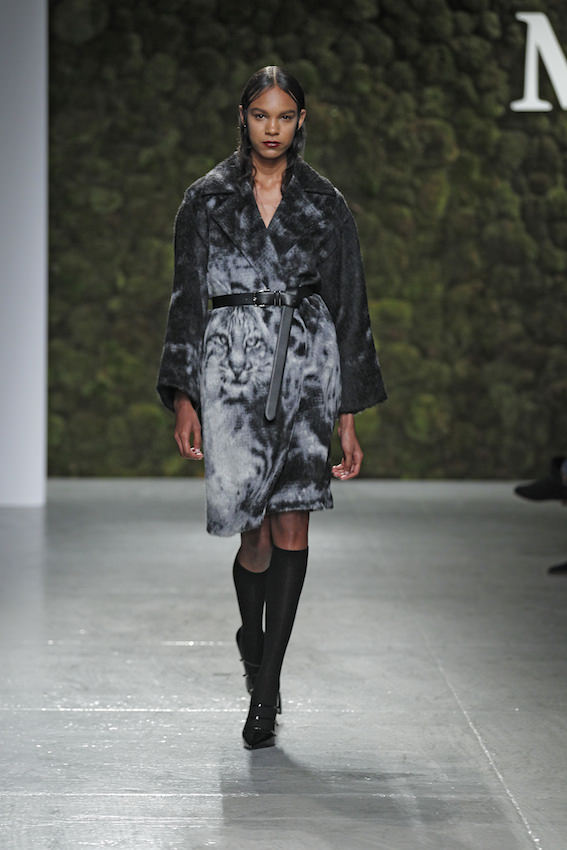
Courtesy of Max Mara
IAN GRIFFITHS: It’s not the first time that we’ve done a collection based off of New York City.
WW: Right, the Resort 2015 and Spring 2015 were inspired by the seventies and eighties in New York.
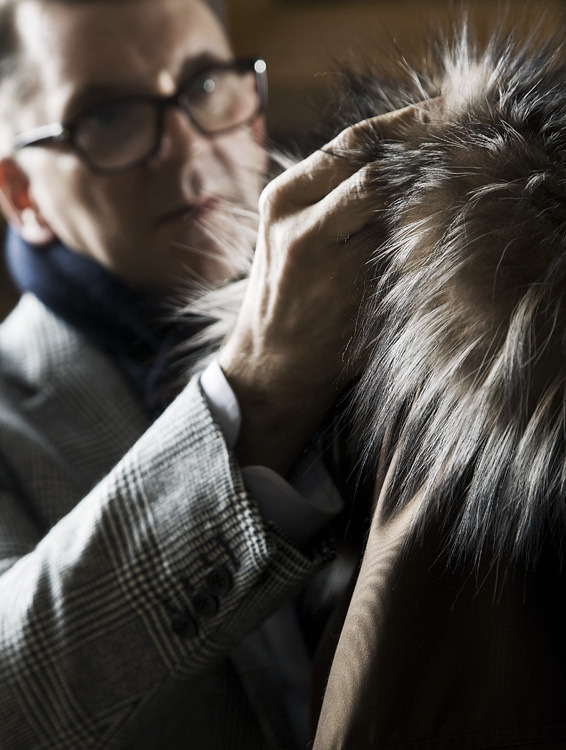
Courtesy of Max Mara
IG: I think that what happened in those years, in the seventies and eighties, were of such huge significance that we’re only really starting to process their importance now. I think that’s why they’ve been in the air for a few seasons. We wanted to commemorate this collaboration with the Whitney, and we wanted to do it in a way that was very real and meaningful and not at all superficial. It was quite a big, scary challenge. We started the collection with a conversation with Donna De Salvo, who’s the chief curator of the Whitney. And to speak to a person like that, you’ve got to be quite prepared.
It was the objective from the outset of the collection to make this inspiration really, really rigorously real, and so at every stage, like the animals that we decided to focus on for the prints and the jacquards are really the animals that featured in Fritz Haeg’s installation at the Whitney in 2008. And the references to artists like Robert Smithson were genuine references. So every conversation I had with Donna was a bit like giving my university thesis.
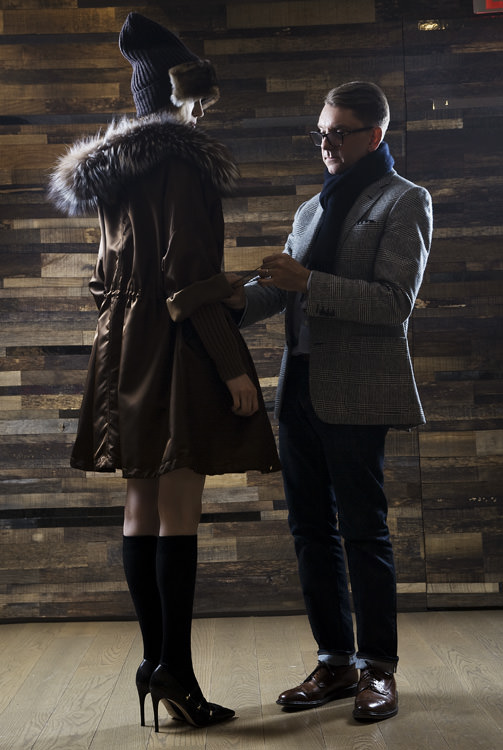
Courtesy of Max Mara
As a design team, what we love doing is creating clothes that are real and wearable. They have a message, but the message is easy to understand at the same time. So it’s not about being obscure or intellectual; it’s about doing something that has an easy to understand feel and has emotive content.
WW: Because sometimes with too big an idea it becomes too heady and not enough about actually wearing the garment.
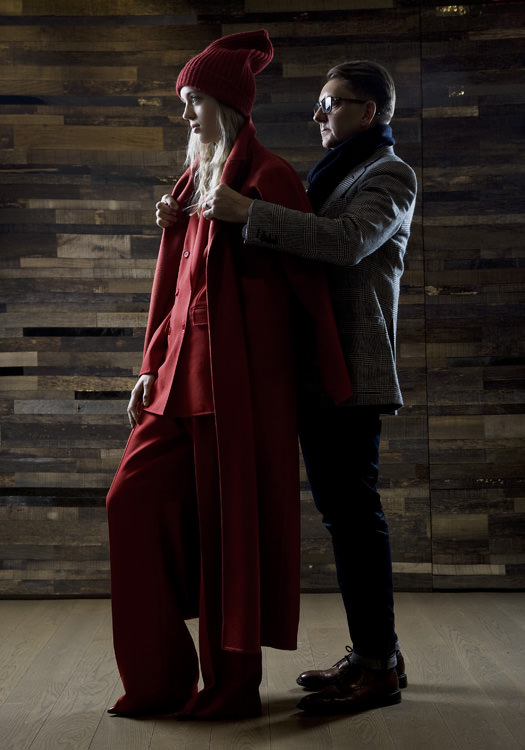
Courtesy of Max Mara
IG: It becomes too conceptual. And we don’t do conceptual clothes. The challenge is to take concepts and turn them into wearable clothes, so at the end of the day you have a parka that you put in your wardrobe and wear it to live your life. It doesn’t wear you. That’s the challenge.
WW: Were there artists you already had in mind before talking to Donna De Salvo, or did those references to Haeg and Smithson come from speaking with her?
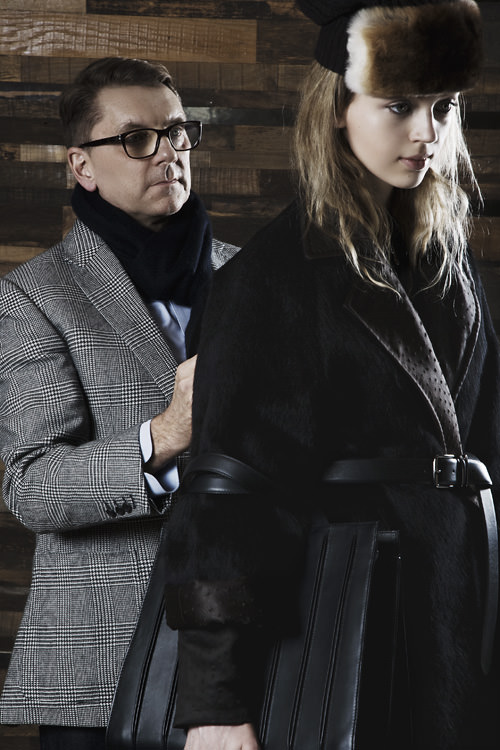
Courtesy of Max Mara
IG: Well, the whole thing was a thought process. First of all about the Whitney itself and how the shape of the building was dictated by the streets around it, and therefore dictated by the memories of what happened around it. I’m really aware of how rich in artistic memories downtown Manhattan is because I lived through that period. I know that only four blocks away there was the Roxy, where the artistic world, like Keith Haring and Basquiat and Warhol met Debbie Harry and Madonna, that incredible party time. That was one aspect of it looking at that side of the history of the neighborhood. So looking at photographers like Jeannette Montgomery Barron, who had an exhibition in the Collezione Maramotti, and her pictures were of artists of the time. That was one strand. But then the other strand was a sort of gut feeling for things that were natural, animals, fauna and flora. Then we started to think about the proximity of the Whitney to the High Line and the whole idea of the return of nature to the city. There is actually a macro-trend; this idea of re-wilding is a major obsession. That’s why at a fashion level we respond to anything that’s got animal print because we love the idea of nature. Re-wilding, this concept is the idea of imagining animals returning to the city, or animals that live in the city, or pining for animals in the city. And there are a whole load of things that have been featured at the Whitney like Fritz Haeg’s “Animal Estates” or artists like Robert Smithson who wrote at great length about the city and nature, whether the city returning to nature, or nature being reintroduced to the city.
WW: What’s interesting is you hear a lot about the relationship between architecture and fashion, but mostly in the sense of form and shape. What you’re talking is the why of architecture—why Renzo Piano has designed the Whitney the way he did versus mimicking its form.
IG: I had to get over thinking that way. That’s how the Whitney bag is designed and that works for the bag. But if you take that approach with a garment, then you end up with something conceptual, and I had to think in a more emotional way, about why that building is the way it is. As soon as I started on a site visit thinking about the relationship of the building to the city, then I found that was the way of moving the collection forward.
WW: And with the Whitney bag, you worked with the Renzo Piano Workshop?
IG: The design team of Renzo Piano and our design team worked very closely. It was a collaboration at every stage, and that was really an exciting thing to be involved in. I mean, this collection, working with the Whitney itself, the chief curator, and Renzo Piano—it couldn’t be any ordinary pre-collection.
WW: That moment of red at the end of the collection was such a shock. Was that referencing a particular artist?
IG: That was a literal thing. When we first started looking at the artistic heritage of downtown, we looked at Trisha Brown’s roof dances of the early seventies, where she had a dancer on the roof of every building in a neighborhood and each dancer was head-to-toe in scarlet red and danced in relation to each other. That was quite an iconic moment in New York art history. So this idea of the head-to-toe red, I had an image of the city—asphalt, brick colors, and gray and then this red dancer standing on the rooftop.
WW: Max Mara has an ongoing relationship with the arts. You mentioned the Collezione Maramotti, then there is the annual Max Mara Art Prize—but that’s always kept separate from the actual garments and accessories. Have you personally always been interested in contemporary art?
IG: Yeah! To me, fashion is culture and art is culture and the whole thing is connected. I have quite strong feelings that fashion is not art and could never be art. They both have quite separate remits. Fashion has to be liked by people and people have to respond to it in a positive way, otherwise it doesn’t become fashion. Whereas an artist can produce something that that nobody likes that could be quite horrible but it’s great art, possibly. So for that reason fashion and art can never be the same, and I think people get in a mess when they try and confuse the two. I think fashion can be connected to art in a broader cultural context, absolutely. I think fashion is better when it takes into account cultural influences.
I’m not one of those people that would rather have been an artist—absolutely not, because I love fashion. I’ve learned to discover the strength of it, the beauty of it, and the excitement of it. I love any kind of cultural activity—music, photography, painting, contemporary art, everything.
This article is in Whitewall‘s summer 2015 Design Issue.









